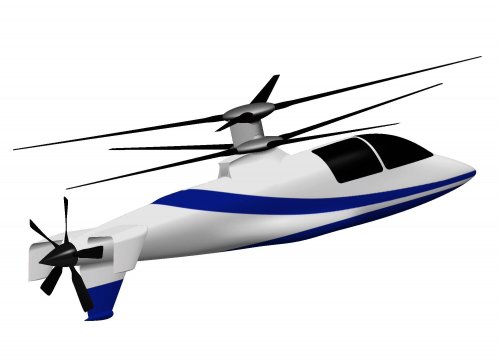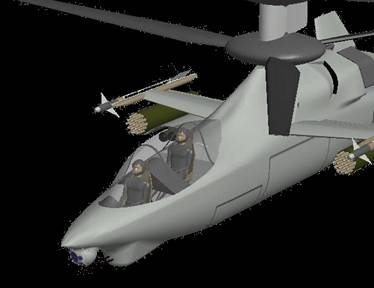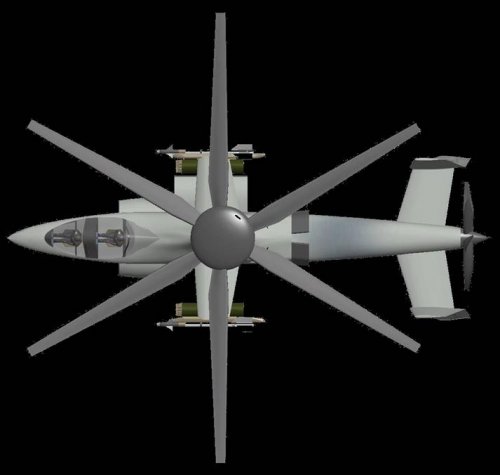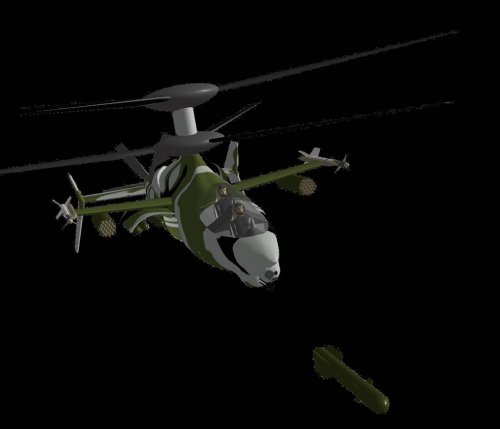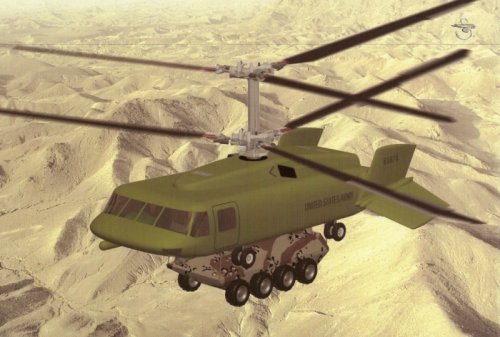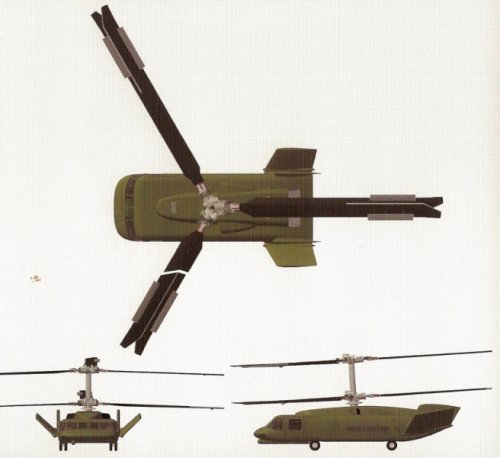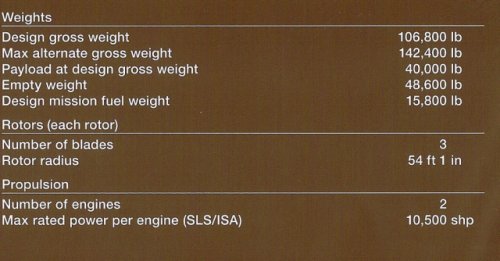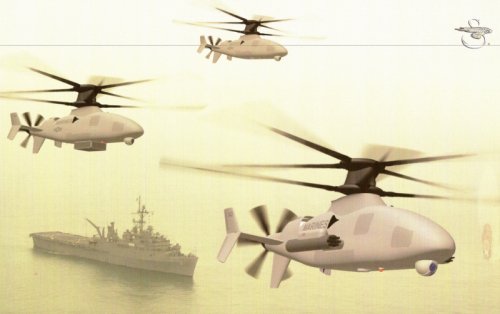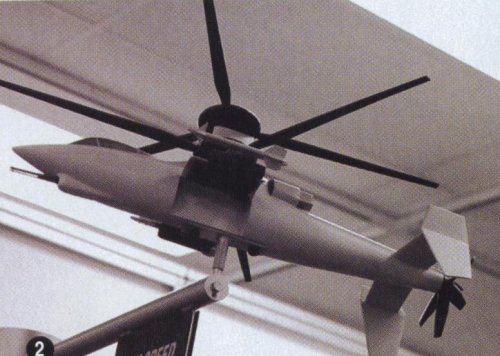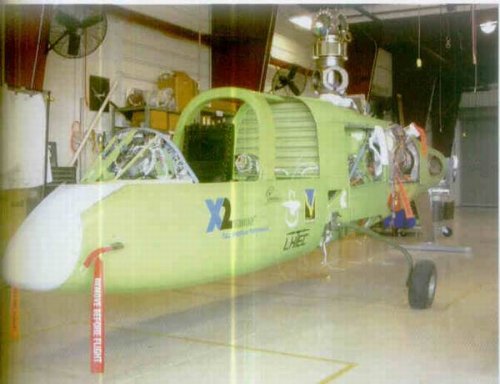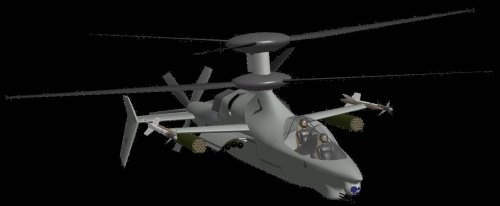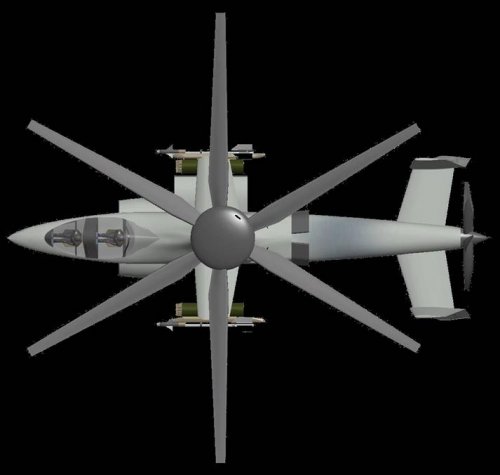yasotay said:
LowObservable said:
While there has been "mudslinging" about the V-22, the hard fact is that it has managed to gather a lot of mud without the help of the media. In fact, my recollection is that the media in general were pretty pro-TR way back in the days when Cheney had it in his gunsights (along with his hunting buddies) and the Congressional Texafia envisioned the sky full of V-22s.
As I remarked elsewhere, it's all about weight. I'm sure that I have 1983-84 brochures somewhere where JVX was about the same size as it is today, but would fly happily on T64s until a new-gen engine was developed. The OEW was a lot different.
A lot was different with the JVX. The prop-rotors and the gross weight of the aircraft with the initial JVX. Rotors were optimized for Army mission, not cut to allow the aircraft to fit on the deck of an LHA. Weight was less as well because the wing did not have to fold for below deck operations.
I'm sorry, but , I must differ in some aspects. The original program was HXM, and it was solely a Marine program. DoD saw the potential of the technology and restructured it as a joint program, but the Marines were always the main drivers. Their requirements formed the baseline and shaped the fuselage box and foot print, as well as the folding wing and proprotor diameter ( I believe optimum size for the V-22 would actually be about nine feet larger, but this wouldn't meet the clearance requirements for the operating spots abeam the island). Air Force range requirements drove the fuel system provisions, and it would have had a different equipment fit, but would basically be very similar to the USMC version
Army wanted a special version for their Special Equipment and Missions Aircraft (SEMA), and would have been the e most radical change. Designed to cruise at 30,000 feet, it would have had different proprotors, sacrificing some hovering efficiency for high altitude performance. It would also have a pressurized cockpit, but I can't remember if the Army was willing to pay for a different wing. They also saw a MEDEVAC role for the aircraft, but those probably would have been "plain vanilla" V-22s, since they wouldn't need all the expensive SEMA features. USAF, though, object to the SEMA bird feeling it intruded too mush on their turf, and that part of JVX was cancelled. Since the regular V-22 would do everything non-SEMA the Army envisioned, they pulled out of the program figuring why kick in R&D money for a program that would develop an aircraft that could met their needs without their money? If they chose to, they could buy V-22s off the shelf.
The reason the media was so V-22 was that every study by everyone said Tilt-Rotor was the way to go (even Sikorsky's studies reported that Tilt-Rotor was 'equally competitive'. In response, Cheney's folks went out and hired their own experts and had them study the decision. Their conclusion was that the cancellation was wrong and the program should be restarted. The response was what you'd expect, the study was rejected. This was great fodder for the newspapers.
Regarding the engine, what leaked out was that the Program experts had weighed the cost/benefit of the various options and selected the advanced GE engine proposal, which was also planned to power the P-7. As a courtesy and as part of normal practice, the decision was pre-briefed to the highest level before the public announcemet. the engine program manager was then fired, and it was announced that the T64 would power the V-22. The T64 is a fine engine, but it weighs more and burns more fuel, which is why it has to be more powerful than the other two engine proposals, to lift the extra fuel. Ironically, although the GE engine was aced out of the V-22, it has now resurfaced as the powerplant for arch-rival Sikorsky's CH-53K.
X2's biggest hurdle is timing. Back in the early '80s when both Tilt-Rotor and ABC were in their infancy, either technology offed the promise of great advance, whichever one worked out. Now, though, even if X2 ever flies and meets all of its promises, does it offer that much advantage over where Tilt-Rotor already is to justify the cost and risk of developing it?


